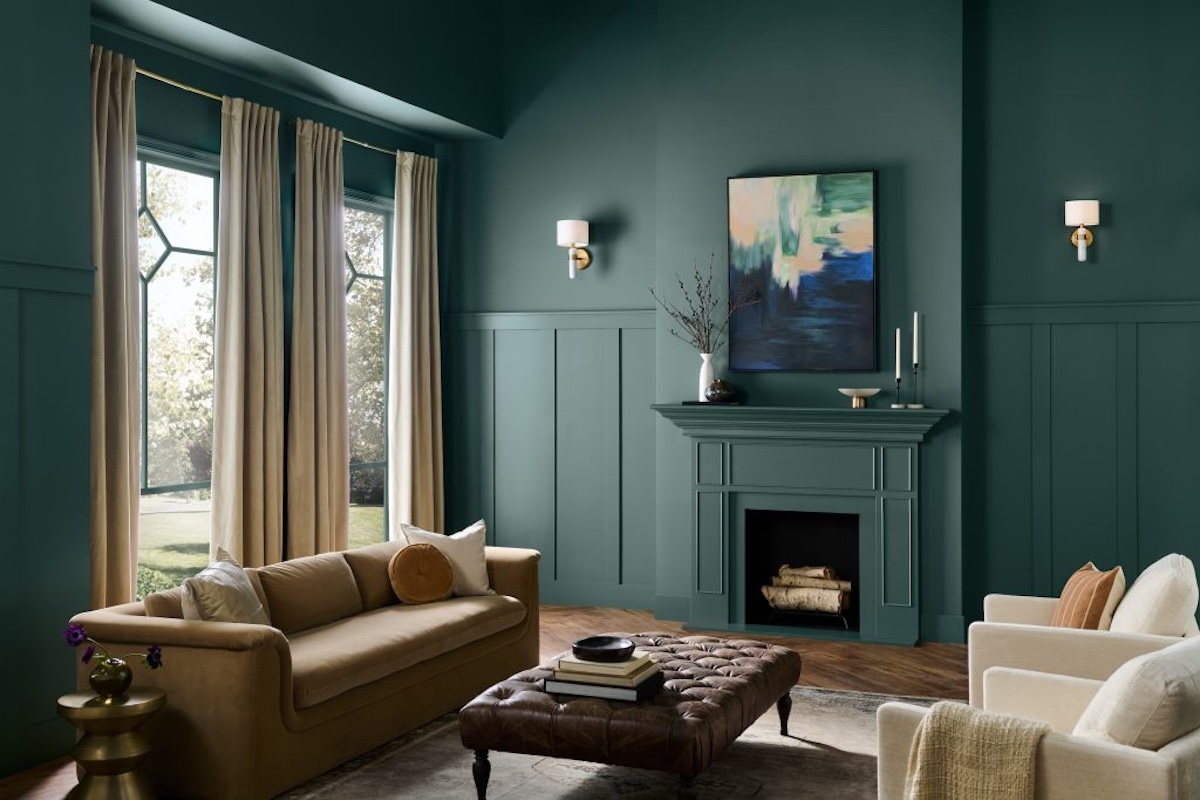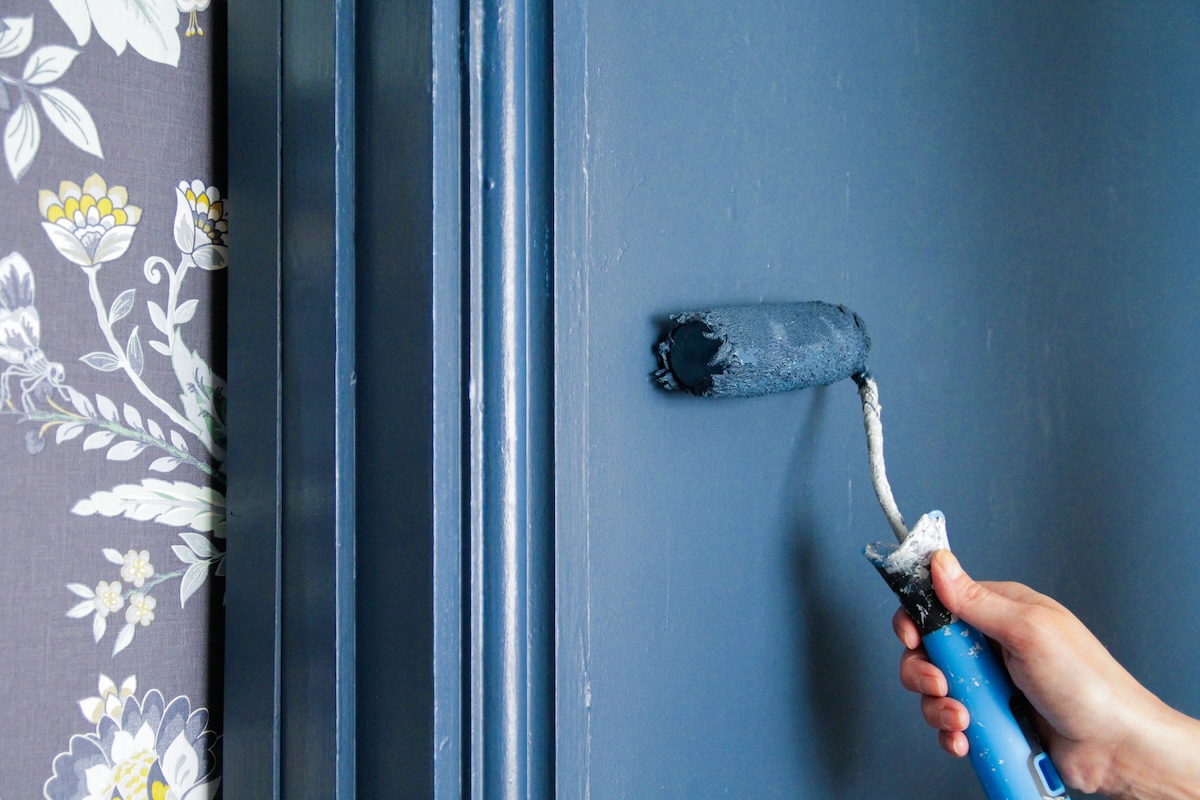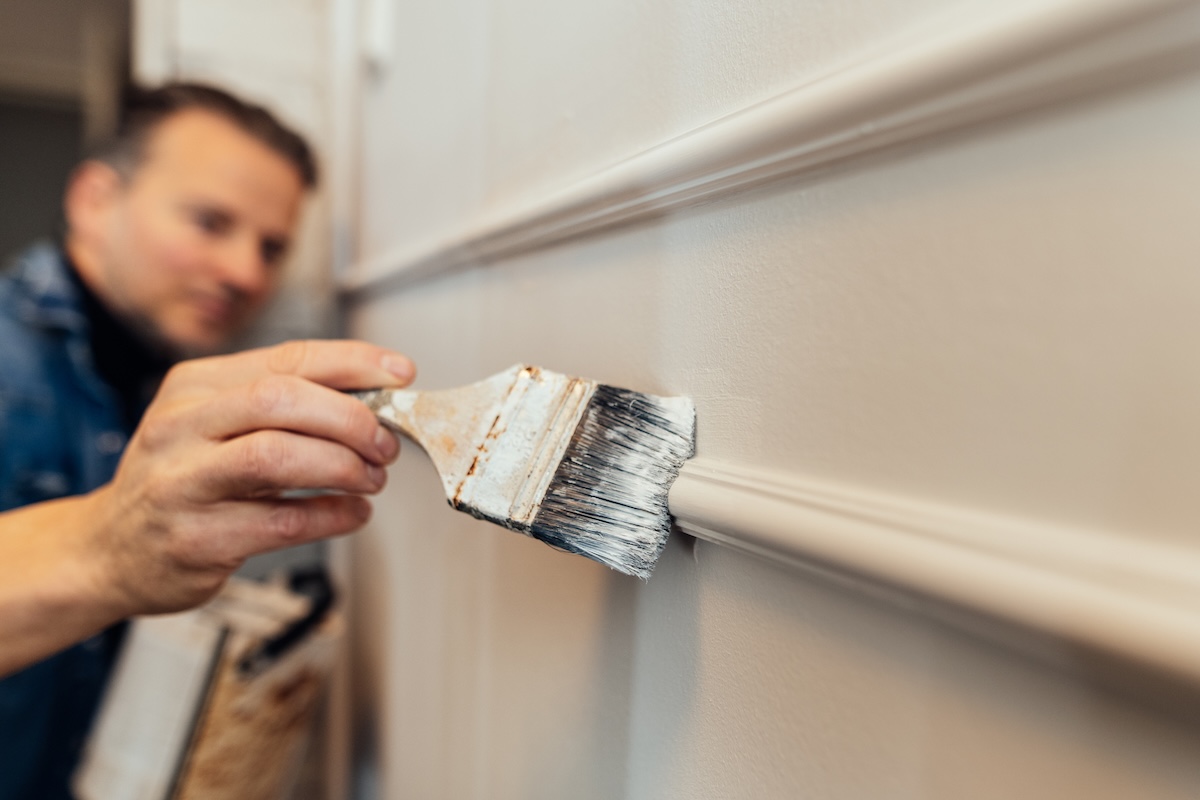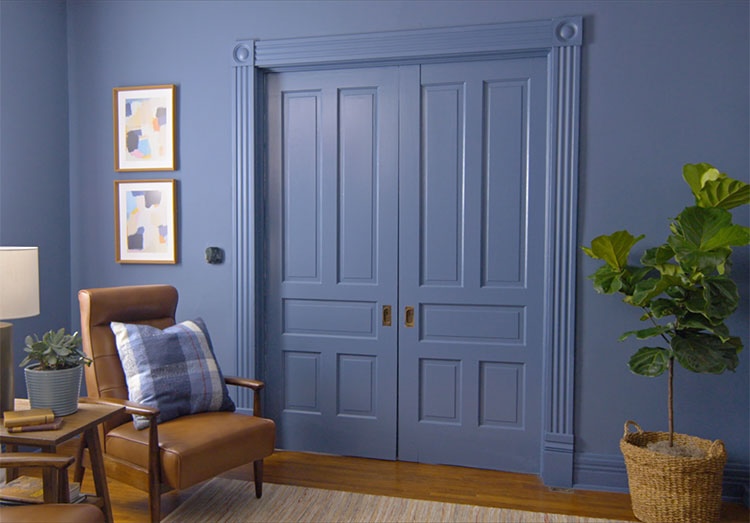

We may earn revenue from the products available on this page and participate in affiliate programs. Learn More ›
It’s an unwritten design rule that trim is painted white regardless of the wall color. Or is it? While using contrasting wall and trim color combinations may never go out of style, painting trim molding to match the wall color, be it white, navy blue, or sage green is becoming more and more popular. This style choice can add sophistication while also making small rooms feel more expansive. Plus, painting a room one color is just easier. Ahead, we break down all the reasons why people are loving the look of a monochromatic room.
1. It makes the space appear larger.
Painting trim the same color as walls eliminates a visual break. When the walls, crown molding, and ceiling are the same color, the contrast between that breaks up the junction between the walls and the ceiling disappears. Without that visual break, your eye is free to travel from floor to ceiling, making the space feel larger than if each part were a different color.
“Traditional white trim draws your eye to the contrast, while matching trim makes a space feel more expansive,” says Jennifer Jones, principal designer at San Francisco, California-based Niche Interiors. This effect makes painting trim and walls the same color ideal for smaller rooms, such as two-piece bathrooms, cozy dens, and snug home offices.

2. It creates a calm feel.
While contrasting trim and wall interior paint can add interest, the continuity created by painting trim and walls a consistent color, makes a room feel less busy. Instead, the consistent color evokes a relaxed calm mood. Matching trim also puts less emphasis on doors and windows.
“Painting the trim in contrasting colors is a great way to add another layer of design, but it also creates visual breaks that can interrupt the flow of a space, says Gala Magriñá, founder of Westchester, New York-based Gala Magriñá Design. “We prefer a more seamless look that flows, avoiding delineations between walls and doorways so the eye moves more effortlessly through the room.”
3. Puts focus on the furniture.
Matching your trim and wall color is a relevant idea if you want to showcase furniture and art as a room’s centerpiece. When you go with a contrasting trim color, the eye is drawn to windows, doorways, and architectural features in the room. But when the baseboards and the rest of the trim matches the wall color, it takes the focus away from the walls and onto the furnishings in the room. “Coordinating walls and trim tend to recede in a room, allowing the furniture, artwork and accessories to take center stage,” Jones says.

4. Makes painting easier.
Painting contrasting colors for trim and wall colors requires more work. You either need a very steady hand or use painter’s tape to create a clean border between the two colors. Then you need to paint one before the other, using a different set of brushes. Applying painter’s tape can be tedious, and free handing often results in an uneven border between the two colors and a fair amount of touching up to fix mistakes. If you’re painting trim and wall the same color, you don’t need to worry about creating a clean line between wall and trim, especially if you go with a consistent sheen.
5. Enhances carpentry details.
Painting trim and walls the same color as cabinetry and bookcases creates a cohesive feel that brings all the elements of the room together. It also reduces the visual clutter that rooms with cabinetry or built-in shelving create. It’s also a great design choice if you want to bring more focus to the items you’re displaying on a shelf or in a cabinet with a glass door. When everything is the same color, the shelves and cabinets become muted, allowing the items that are displayed in them to become more prominent.

Pro Tips for Painting Walls and Trim the Same Color
While painting walls and trim the same color is a straightforward project, there are some tricks of the trade you’ll want to use to get the best results.
- Use contrasting finishes. Consider varying the sheen between your trim and wall color. Using semi-gloss finish for the trim and eggshell or flat finish for the wall adds depth.
- Stick to enclosed rooms. Painting walls and trim the same color works best on enclosed rooms that don’t adjoin other rooms, says Jones. “We especially love using this idea in bedrooms, dens, and home offices,” she says.
- Consider color saturation. The effect you get from painting your walls and trim the same color can vary depending on what color you choose. While white walls and white trim adds elegance, choosing a darker color, such as a dark blue or deep green, adds drama.
- Test the colors. Test your paint colors by painting a small area first. Paint colors can always look different depending on the lighting in the room, so you’ll want to test a small area before you fully commit.
- Don’t forget the ceiling. If you’re going with a darker color and don’t want the sharp contrast of a white ceiling, use the same paint color for the ceiling lightened by 50 percent. The ceiling will cohere with the walls and trim without making the room feel cave-like.
